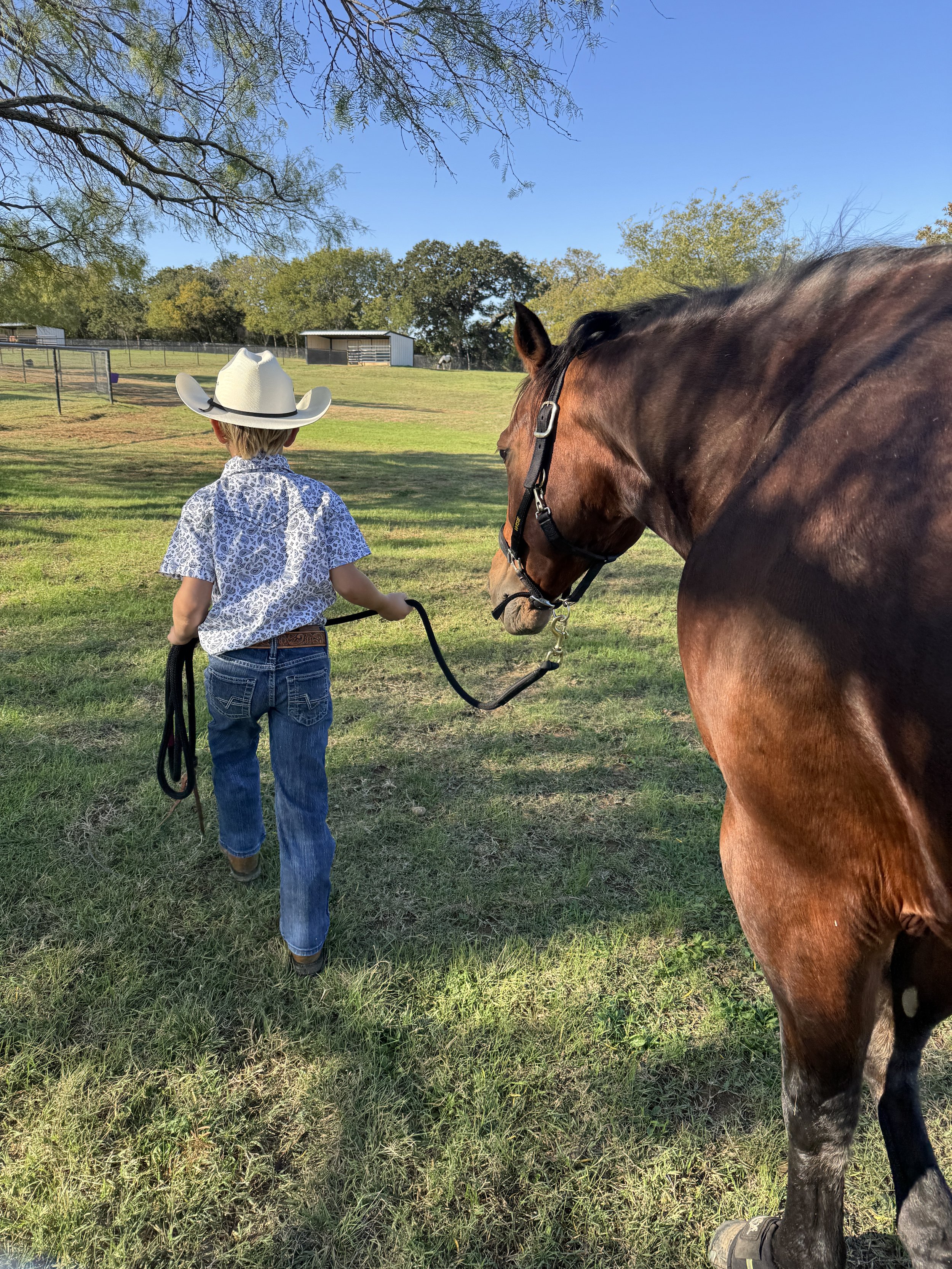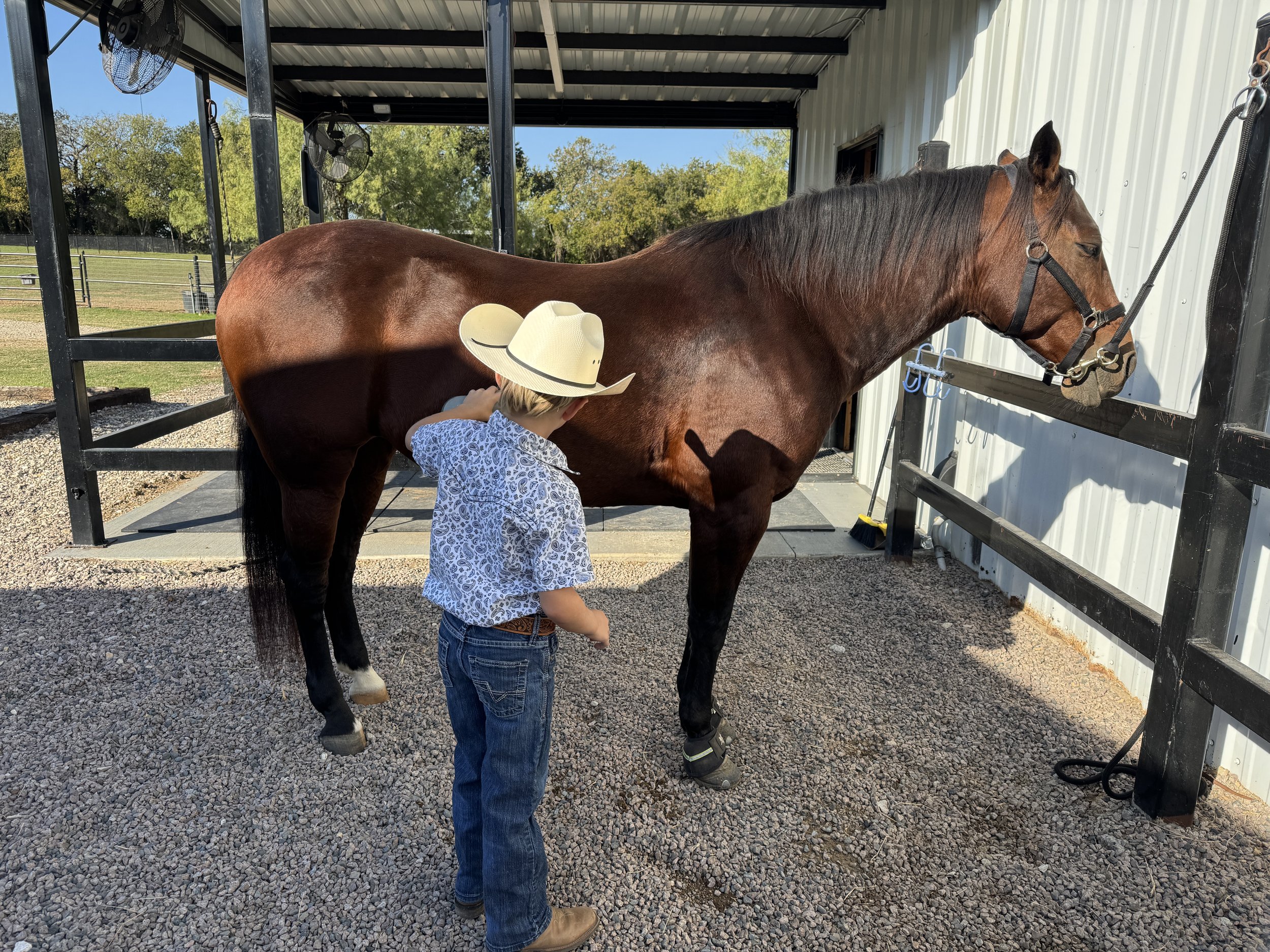November 14, 2025: The Curious Case of the Frog 🐸
If you’re like me, the words horse and frog don’t exactly belong in the same sentence. That changed this week when I picked up Bee’s back hoof and saw what looked like a giant flap peeling off. I nearly called the vet, convinced she had hoof rot or some mystery fungus.
Turns out, Bee’s hoof was just doing what healthy hooves do — shedding her frog.
Who knew?
So, what is the frog anyway?
The frog is that rubbery, V-shaped pad on the bottom of your horse’s hoof, tucked between the heels and stretching toward the toe. It might not look glamorous, but it plays several critical roles in your horse’s comfort and movement:
Shock absorption: It cushions every step, helping protect joints and tendons.
Circulation: When the hoof strikes the ground, the frog compresses slightly, pushing blood back up the leg — like a natural pump.
Traction and grip: Its texture helps prevent slipping.
Sensory feedback: It gives the horse information about the ground beneath them.
In short, the frog is part of what makes a horse’s hoof an engineering marvel.
I didn’t know this before I owned a horse but every horse owner learns quickly: hoof cleaning is a daily routine — sometimes a multiple-times-a-day routine if you’ve been through mud, sand, or loose dirt. Picking out the hooves keeps the frog clean and healthy, prevents packed mud or manure from softening the tissue, and helps you spot small issues before they turn into big ones (remember the foot abscess we had early on? that’s when doc told me I needed to be cleaning her feet daily).
It’s one of those quiet, everyday chores that says, “I care about my horse’s feet as much as their face.”
When frogs “shed”
Just like a snake’s skin or your own fingernails, the frog naturally exfoliates. Many horses shed their frogs once or twice a year, usually during seasonal changes or after long periods of moisture.
The old, dead tissue begins to peel away to make room for fresh, healthy growth. It can look dramatic — sometimes like a big, loose flap — but it’s usually nothing to worry about. If your horse’s hoof is otherwise healthy (no heat, odor, or tenderness), shedding is just part of the renewal cycle.
In Bee’s case, her back right frog shed almost completely this week. I panicked at first, her farrier had just commented on how healthy her hooves were, so I took a breath and learned something new from one of the barn pros. Her front frogs look like they may follow soon, likely at her next farrier visit.
^^Bee’s front frog lifting up but being held on by her new shoes.^^
When to worry
If you notice a foul smell, black mushy areas, or sensitivity when you press near the frog, that may signal thrush or infection, which needs cleaning and treatment. A healthy frog should feel firm, slightly springy, and smell like — well, a hoof, not a swamp.
About Durasole and hoof care
I heard about Durasole this week, and it turns out it’s a great option not only for thrush prevention but also as a hoof hardener. It helps toughen the sole and frog by cross-linking proteins in the outer layers, creating a denser, more durable surface.
That doesn’t mean you need to use it constantly. Think of it like a protective topcoat — useful when footing is wet, the horse is transitioning between shoes, or the frogs look a little too soft.
Always start with clean, dry hooves and follow your farrier’s advice on frequency.
The science of it all
The frog is connected to the digital cushion, a spongy structure inside the hoof that supports circulation and shock absorption. Each time the frog makes ground contact, it works together with that internal cushion to push blood back up the limb. That’s why farriers often say the frog is part of the horse’s “second heart.”
So while Bee’s peeling frog made me think “Oh no,” science says it’s just her body doing its job.
Fun frog facts
Frogs usually shed one to two times a year.
Horses in wet conditions may shed more often.
The frog makes up about 25% of the hoof’s surface area.
A strong frog equals a strong foundation.
Final thoughts
This week’s lesson: not everything that looks alarming is actually a problem. Sometimes, it’s just renewal in progress.
From the ground up, Bee’s teaching me something new every week — and if her frogs could talk, I think they’d say, “Don’t worry, I’ve got this.”
Bee’s Week in the Cold (Texas Edition)
It dropped into the 30s at night this week, which for Texas might as well be the Arctic. Being the ever-doting mom, I blanketed Bee that first night. Since then, I’ve educated myself, talked with her prior owner, and picked the brains of a few barn friends. Bee’s winter coat has come in soft and plush, so I’ve concluded she doesn’t need a blanket for the current nighttime temps. We’ll keep an eye on the wind, humidity, and dips in temperature and make our game-day decisions as we go. (Blanketing, I’ve learned, is a very big topic — one I’ll save for another day.)
We rode in the “cold” 40s and 50s this week, and Bee handled it beautifully, though she was definitely suspicious of the longhorns grazing on a nearby ranch. She’s been such a good girl under saddle, and when we’re not riding, grooming, or convincing her to drink more water, she’s out in the pasture with her girl gang. Coco seems determined to challenge her for boss mare status, so the social ladder is still shaking out.
I also had a little help this week — a young cowboy who’s the barn manager’s grandson. He raises cattle at home, loves to ride, and is as talkative as the day is long. He helped me by getting Bee from the pasture. She couldn’t have been sweeter, walking quietly beside him and loving the extra grooming attention he gave her. Watching her gentle side come through reminded me just how far she’s come since those early days together.
Apparently Bee’s weakness isn’t carrots after all — it’s cowboys!
This is a look of pure contentment. Bee loves a good brushing, especially from a cowboy that knows all the right spots!
Until next time,
Christina & Bee 🐝💛





